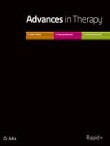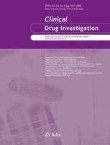
Abstract
Introduction
Cefprozil, an oral second-generation semi-synthetic cephalosporin, possesses a broad spectrum of antimicrobial activity. A granule formulation has been developed to improve medication adherence of the patients. This study was conducted to assess the bioequivalence of the granule formulation to a dry suspension in healthy Chinese volunteers and estimate the pharmacokinetic (PK) profiles of cefprozil.
Methods
An open-label, randomized, single-dose, two-period, two-group, crossover study was conducted in 60 healthy Chinese volunteers under fasted or fed conditions (30 volunteers for each condition) to assess the bioequivalence between two formulations of cefprozil. Blood samples were collected at specified time intervals, and the plasma concentrations of cis- and trans-cefprozil were determined by a validated liquid chromatography-tandem mass spectrometry (LC–MS/MS) method. PK and bioavailability parameters were estimated via non-compartmental methods. Adverse events (AEs) were also recorded.
Results
Under fasted conditions, the mean Cmax was (3534.70 ± 634.67) ng/ml, Tmax was (0.98 ± 0.25) h, t1/2 was (1.37 ± 0.13) h and AUC0-t was (9302.86 ± 1618.39) ng·h/ml, respectively, after a single dose of 125 mg cefprozil for suspension. Under fed conditions, the mean Cmax was (2438.80 ± 493.78) ng/ml, Tmax was (1.66 ± 0.76) h, t1/2 was (1.36 ± 0.24) h and AUC0-t was (9332.36 ± 1373.61) ng·h/ml, respectively. The PK parameters of the granule formulation of cefprozil were similar to those of the suspension. The 90% CI values of the GMRs of Cmax, AUC0-t and AUC0-∞ under both fasted and fed conditions were within the prespecified bioequivalence range (80.00–125.00%).
Conclusions
According to the criteria for bioequivalence, the test granule formulations of cefprozil and "Cefprozil for Suspension®" were determined to be bioequivalent whether under fasted or fed conditions by measurement of cis-, trans- and total cefprozil.
Trial registration
ClinicalTrials.gov identifier, NCT04414254.







